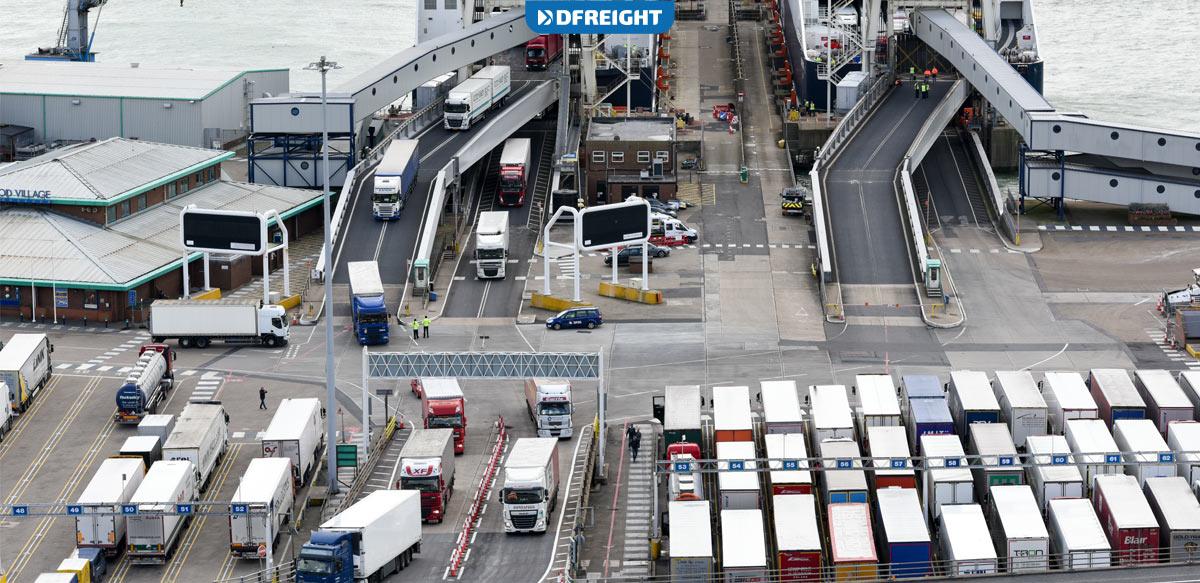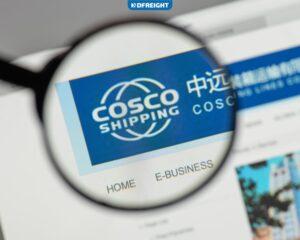Have you ever heard the buzzword “Cross-Docking” in the sophisticated world of logistics? It is indeed a forward-looking approach that many businesses are taking to revolutionize their supply chain management. In a nutshell, Cross-docking is a sort of freight movement in which raw materials, incomplete commodities, or finished products from producers or suppliers are quickly transported to customers, end-users, or next-level producers with little to no storage in between.
Even though the strategy provides businesses with a myriad of benefits in the long run, it may have some drawbacks, or better say, challenges to face. If you’re curious to learn more about this transforming logistics method, its different types, and key pros and cons, keep focused and continue reading.
Table of Contents
An Introduction to Cross-Docking
In logistics, cross-docking is a practice of unloading materials from an inbound transportation vehicle and loading these materials directly onto outbound transportation vehicles, with little to no storage in between. This practice is most commonly employed when there is a high degree of certainty that the inbound shipments will be used to satisfy outgoing orders.
This procedure takes place in a distribution docking terminal with doors for both incoming and departing trucks. Because the commodities are designed to be moved through immediately, this technique only needs a small amount of storage space.
Cross-docking can significantly reduce handling costs and inventory levels while improving customer service. In order to be effective, it requires close coordination between the different parties involved, including suppliers, manufacturers, distributors, and retailers.
Main Types of Cross-Docking
Even though all cross-docking facilities follow the same universal philosophy and take a similar approach, they could be classified into three different types:
1. Continuous Cross-Docking
The first and most basic form is continuous cross-docking. In this instance, the terminal features a central location where items are transported and swiftly switched from one truck to another. These terminals are often constructed as a line to make loading and unloading quick and easy.
In the event that one of the vehicles is early or late, the truck that comes first will wait for the other to arrive so that the transfer of products may be completed swiftly. The identical products are entirely moved from one truck to another when they arrive.
2. Consolidation Cross-Docking
It is sometimes necessary to combine many things in one area before moving them all to another site at once. For instance, it would be wasteful to drive multiple trucks that aren’t completely loaded if a big retail store has already bought its goods.
Consolidation cross-docking is implemented for this reason. Several separate cargoes are combined throughout this operation and placed into a single outgoing vehicle. As a result, different goods can be unloaded and kept in the terminal’s additional space until the departing truck arrives.
3. Deconsolidation Cross-Docking
Deconsolidation cross-docking is the exact opposite of consolidation, as you may have already realized. In this case, a sizable inbound truck makes a halt at the terminal to unload a variety of merchandise onto the storage area. The items are then separately placed into departing trucks after this has occurred.
These items must be separated since they are typically supplied directly to clients as part of smaller, individual purchases. Customers receive their products quicker, and it lowers the expenses of transfer, handling, and shipping.
Advantages of Cross-Docking for Businesses
Businesses may benefit greatly from applying this method to their processes in a variety of ways. The most notable benefits can be classified as follows:
1. Streamlines Material Handling
With cross-docking, material handling gets much smoother and simpler. It dramatically improves productivity and operating performance. Additionally, it offers better functionality for label verification, destination scanning, in-motion labeling and measurement, and other related tasks.
2. Lowers Warehousing Costs
Every firm incurs significant costs related to the ownership or renting of a warehouse. Due to the high value of the items, they must be both large enough to accommodate lorries and vehicles and secure round-the-clock. One benefit of cross-docking is that the majority of these expenses will be eliminated, saving you money and enabling speedy delivery of the items from point A to point B without the need to continue renting a warehouse. The cost will be far less than hiring a whole holding, but you will need to hire a smaller facility to offload your vehicles.
3. Reduces Labor Costs
It is difficult to run a warehouse by yourself. Many workers are needed to transport the items from the containers to the storage as well as for safety reasons. Managers must also ensure that the warehouse is operating efficiently and that there is always enough room for incoming cargo. Cross-docking decreases the amount of personnel needed for a quick turnaround while still ensuring that the customers’ expenses and profits are met. It does not, however, exclude all employees from their transport.
4. Decreases Shipping Time
Cross-docking significantly shortens the shipping process. As soon as the merchandise arrives at your warehouse, you quickly transfer it from one vehicle to another and send it to the client. Most items may leave the facility immediately, if not within a few hours. This is excellent for your client, especially in today’s world when customers can always know the actual location of their products. A product’s packaging on the road is always preferable to one that is still waiting to be loaded in a warehouse.
5. Helps Protect the Environment
There is a claim that this method complies more effectively with supply chain sustainability principles since it assures that each vehicle is used to the full capacity for all deliveries from the warehouse rather than just a few. Therefore, fewer trucks and vans will be needed with cross-docking. Additionally, expenses like heating and electricity associated with running a warehouse are kept to a minimum.
6. Reduces Risks of Cargo Damage
Accidents do happen sometimes, but they usually happen during the handling procedure, such as when warehouse workers must use forklifts to move things throughout the space or if they want to store the products there. The likelihood of the things breaking decreases with how little care they receive. Because transportation is less critical for this logistics method, there is less interaction between the commodities. The items are directly carried by the provider and the truck, as opposed to being carried and transferred inside a storehouse.
7. Complies with Forthcoming Technologies
Cross-docking is great since it will embrace the new technologies in the logistics industry. For instance, the use of autonomous trucks is now being explored in some EU countries. Soon, you won’t need to pay for the accompanying labor costs while shipping your items across the nation. In the near future, the entire procedure might be automated, removing the requirement for a shipping business to handle everything from the shipper to the vehicle or drivers employed.
If your business has already eliminated or minimized its warehouses, you are almost halfway there and won’t need to make any significant adjustments when a new technology begins to revolutionize the market in the following ten years.
Disadvantages of Cross-Docking for Businesses
Cross-docking can be a very effective way to reduce costs and improve customer service, but it does have some disadvantages as the following:
1. Requires Close Coordination Among All Parties
A big disadvantage of using this method is that it requires close coordination among all the different parties involved. This can be difficult to achieve, and if coordination is not good, then the method can actually lead to higher costs and lower customer service. In order for the method to be effective, close coordination between suppliers, manufacturers, distributors, and retailers is essential. As such, cross-docking can be a challenge for small businesses or businesses that are just starting to use this logistics strategy.
2. Challenges Traditional Supply Chain
Cross-docking can be disruptive to traditional supply chain operations because it requires businesses to make significant changes to their current operations. These changes can be difficult and costly at times, and they may not always be successful. Making the method effective and profitable requires a lot of thought, consideration, planning, and effort to make constructive effects on the current supply chain procedures.
3. Needs Precise Scheduling and Reliability
For cross-docking to be successful, it must be meticulously planned and carried out. Deliveries shouldn’t stay in a warehouse or distribution facility for more than 24 hours. Otherwise, scheduling conflicts and other problems may arise due to the lack of warehouse management systems. Businesses must have complete trust in their suppliers to ensure that they deliver the right goods at the right time to the terminal.
4. Requires More Initial Budget
It would take a significant amount of money to set up the cross-docking terminal constructions at the outset. You would need to have access to loads of funds to build dock terminals and buy a large number of transport trucks to serve your business. You would also have to pay much to establish and run integrated systems to facilitate the efficient transportation of goods.
Does Cross-Docking Suit Your Business Requirements?
As clarified above, there are both advantages and disadvantages to cross-docking which businesses should be fully aware of before making a decision. Using this supply chain method can be beneficial as it can save time and money by reducing the need to store and handle products. However, it can also be disadvantageous as it can create various logistical issues and require a high level of coordination.
Before deciding whether or not to implement cross-docking, businesses should first assess their requirements and priorities. If cost savings is a priority in the long run, then it may be a valuable alternative. However, if issues such as product type or geographical specifics are more important, then cross-docking may not be the best solution.
When it comes to warehousing and shipping needs, it is best to consult a professional 3PL. They will be able to assess your needs and help you determine if cross-docking is the best solution for your supply chain. If you need more information on this or any other supply chain and logistics processes, feel free to get in touch with DFreight.
What is cross-docking?
Cross-docking is the practice of unloading materials from an inbound transportation vehicle and loading these materials directly onto outbound transportation vehicles, with little to no storage in between.
What are the main types of cross-docking?
There are three main types of cross-docking: continuous cross-docking, consolidation cross-docking, and deconsolidation cross-docking.
What are the key advantages of cross-docking for businesses?
The key advantages of cross-docking include streamlined material handling, lowered warehousing costs, reduced labor costs, decreased shipping time, increased sustainability, and reduced risks of cargo damage.
What are the key disadvantages of cross-docking for businesses?
The key disadvantages of cross-docking include the need for close coordination among all parties, the challenges to traditional supply chain operations, the need for precise scheduling and reliability, and the requirement for more initial budgets.
Is cross-docking suitable for my business?
Businesses should consult a professional 3PL to assess their needs and help determine if cross-docking is the best solution for their business.
Is cross-docking expensive?
It would take a significant amount of money to set up the cross-docking terminal constructions at the outset. However, it will mostly pay off in the long run.














